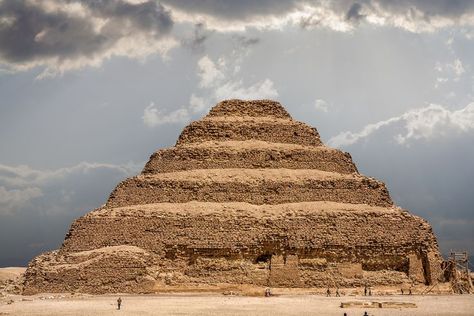share

Introduction Saqqara is one of Egypt's most important and extensive archaeological sites, serving as the burial ground for the ancient city of Memphis. Located about 30 kilometers south of Cairo, Saqqara is renowned for its rich array of pyramids, tombs, and monuments, spanning from the Early Dynastic Period to the Greco-Roman era. It is a vital location for understanding the development of ancient Egyptian funerary practices and architectural evolution. Historical Significance Saqqara was used as a necropolis for Memphis, the capital of Egypt during the Old Kingdom. The site's significance stretches from the 1st Dynasty (c. 3100–2890 BCE) to the Ptolemaic Period (305–30 BCE). The area reflects the evolution of Egyptian funerary practices and architectural styles over millennia. Major Monuments and Structures The Step Pyramid of Djoser: The Step Pyramid, built for Pharaoh Djoser during the Third Dynasty (c. 2670–2640 BCE), is one of Egypt's earliest and most iconic pyramids. Designed by the architect Imhotep, it represents a significant departure from the traditional mastaba tombs and is considered the prototype for later pyramidal structures. The Pyramid of Unas: This pyramid, dating to the Fifth Dynasty (c. 2356–2323 BCE), is notable for its Pyramid Texts, the oldest religious texts in the world. These texts, inscribed on the walls of the burial chamber, provide insights into the religious beliefs and practices of ancient Egyptians. The Tomb of Ti: The tomb of Ti, a high-ranking official during the Fifth Dynasty, is renowned for its well-preserved wall paintings that depict daily life and rituals in ancient Egypt. The vibrant scenes offer a detailed glimpse into the social and cultural practices of the period. The Pyramid of Teti: Built for Pharaoh Teti of the Sixth Dynasty (c. 2345–2333 BCE), this pyramid is known for its Pyramid Texts, which are among the earliest examples of these religious writings. Teti's pyramid is part of a larger complex that includes a mortuary temple and a series of tombs for nobles and officials. Serapeaum of Saqqra: The Serapeum is an extensive underground complex dedicated to the burial of sacred Apis bulls, which were considered living incarnations of the god Ptah. The site features large, intricately carved stone sarcophagi and provides important insights into religious practices associated with the Apis bull cult. Archaeological Discoveries Saqqara has been the site of numerous important archaeological discoveries over the years. Excavations have uncovered a wealth of artifacts, including statues, jewelry, and mummified remains, which have greatly contributed to our understanding of ancient Egyptian civilization. Preservation and Tourism Efforts are continually made to preserve Saqqara's monuments and artifacts. The site is a popular destination for tourists and scholars alike, offering a rich array of historical and cultural insights. Recent archaeological work has revealed new tombs and structures, further enhancing our understanding of the site's significance. Conclusion Saqqara stands as a testament to the grandeur and complexity of ancient Egyptian civilization. Its role as the necropolis for Memphis highlights its importance in the religious and cultural life of ancient Egypt. With its impressive array of pyramids, tombs, and artifacts, Saqqara continues to be a key site for archaeological research and a fascinating destination for those interested in the ancient world.
Together We Can Make Awesome Memories
Are You Ready To Join Us On Your Next Trip?
we believe that travel should be more than just sightseeing. It should be an enriching experience that broadens your horizons and leaves you with lasting memories.
informations
helpful links
- services
- supports
- terms and condition
- privacy
our services
- photography
- suport 24/7
- guide

